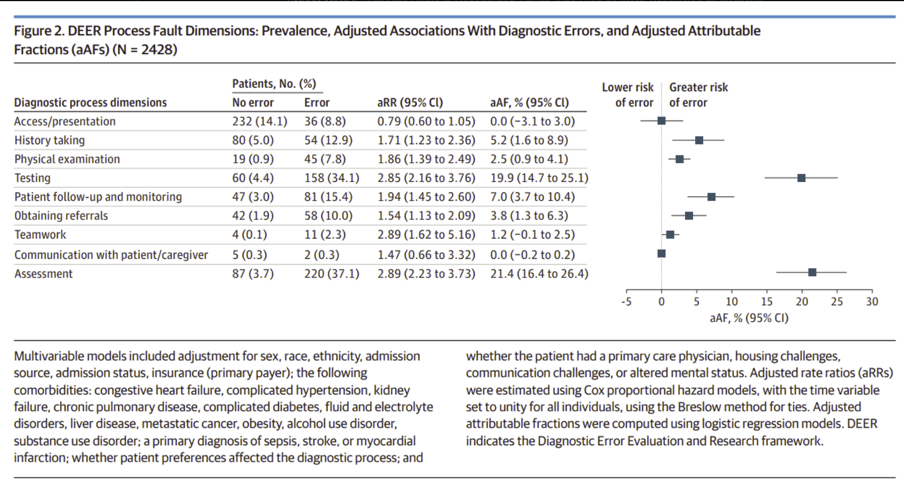🏥 How often do diagnostic errors happen in adult patients who are transferred to the intensive care unit (ICU) or die in the hospital?
1st February 2024
Kevin Sam
2 min read
Hiya 👋
We’re back with another edition of the digital pharmacist digest!
Here are this week's links that are worth your time.
Thanks for reading,
Kevin
👓 Currently Reading: Same as Ever: A Guide to What Never Changes by Morgan Housel
📖 What I'm reading
Diagnostic Errors in Hospitalized Adults Who Died or Were Transferred to Intensive Care
💊📈 Patient Safety
"Question: How often do diagnostic errors happen in adult patients who are transferred to the intensive care unit (ICU) or die in the hospital, what causes the errors, and what are the associated harms?
Findings: In this cohort study of 2428 patient records, a missed or delayed diagnosis took place in 23%, with 17% of these errors causing temporary or permanent harm to patients. The underlying diagnostic process problems with greatest effect sizes associated with diagnostic errors, and which might be an initial focus for safety improvement efforts, were faults in testing and clinical assessment."
Product Model Concepts
👨💻 Product management
The article introduces five key concepts that form the foundation of the product model, which is a way of building products that focuses on achieving outcomes rather than delivering outputs.
Culture of Outcomes: The first concept is about embracing the cultural change that is required to move from funding, building and shipping features and projects on specific dates, to funding, building and shipping products to achieve the necessary outcomes.
Product Strategy: The second concept is about how product leaders identify the most critical problems to solve and outcomes to achieve, by looking holistically across the business and using insights from data, customers, technology and industry.
Empowered Product Teams: The third concept is about how product teams are staffed and coached by product leaders, and how they are empowered to discover and deliver effective solutions to the problems they have been assigned.
Product Discovery and Delivery: The fourth and fifth concepts are about how product teams use rapid experimentation and prototyping to discover an effective solution that is valuable, usable, feasible and viable, and then build, test, deploy and measure the actual product that implements the solution
Book review: Build: An Unorthodox Guide to Making Things Worth Making
👨💻 Product management
"Build: An Unorthodox Guide to Making Things Worth Making" is a book I highly recommend to all product managers and product owners.
Tony challenges us to
Break free from mediocrity and strive for excellence in everything we do
Make a dent in the world and exceed expectations, both personally and professionally
Redefine our approach to work and unleash our full potential 🌍
Key takeaways:
Prioritise continuous learning in our career paths, focusing on what we truly want to learn rather than solely chasing financial gains
Identify revolutionary businesses that disrupt entire industries and address real pain points faced by customers
Surround ourselves with mentors who provide invaluable support, guidance, and wisdom as we navigate challenges and seize opportunities
Communication is key: Foster open and transparent communication within teams and organizations, embrace accountability, proactively seek solutions, and learn from our mistakes, and cultivate a culture of collaboration, active listening, and constant dialogue to achieve remarkable results together
The critical role of great product managers: Possess a unique combination of skills, including strategic thinking, visionary leadership, effective communication, and a deep understanding of technology and business models, Drive the success of products and shape the future of organizations
Are you enjoying this digest? It would mean a lot if you'd consider forwarding it on to someone that you think would also appreciate it!
Stay up-to-date with the Digital Pharmacist Digest
Any comments provided are personal in nature and do not represent the views of any employer


